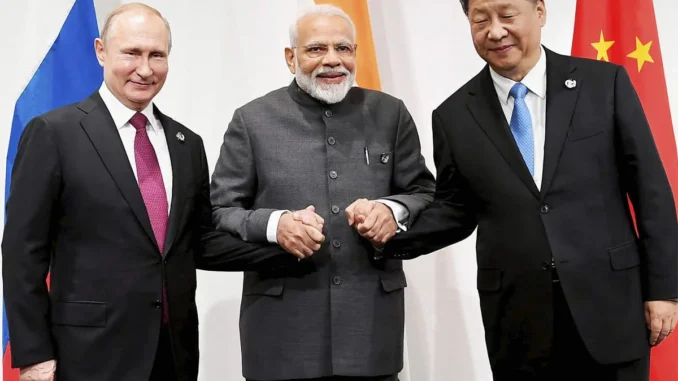
“Delhi has had to weigh its geopolitical economic interests as a close ally of the U.S. in the Indo-Pacific region with its continued dependence on cheap Russian oil, coal, and fertilizers and armaments for meeting its domestic economic and strategic compulsions. Given these choices, it is hardly surprising that India has opted for the latter.”
Those are the last two sentences of an article from the online journal The Diplomat detailing how the ability to source oil from Russia at below market prices has benefited the Indian economy since 2022. Indian refiners have been able to work around the US/EU price cap and other sanctions targeting Russia to grab crude at sub-$60/bbl prices due to the inapplicability of the sanctions regime on Russian crude tanker company SovComFlot since the price cap was invoked.
But now, the latest round of US sanctions targeting Russia following the death of imprisoned dissident Alexy Navalny specifically goes after SovComFlot, prompting the Indian government to say that its refiners will only accept future Russian cargoes if they are brought in on non-sanctioned vessels.
As reported by Tsvetana Paraskova at Oilprice.com, the margins for India’s refiners had already taken a big hit in recent weeks from higher shipping costs caused by the Houthi-caused disruptions in Red Sea lanes.
Here’s an excerpt from that story:
Refiners in India are now concerned that the new sanctions would make it more difficult to have oil shipped from Russia on non-sanctioned vessels, which would raise shipping costs and eat into the refining margins, according to Reuters’ sources.
India will still buy crude from Russia but only if it is sold below the G7 price cap of $60 per barrel and is shipped on non-sanctioned vessels, an Indian government source told Reuters.
Even before the latest U.S. sanctions, Refining margins for India’s biggest state-owned refiners had dropped amid more difficult access to Russian crude and soaring freight rates due to the Red Sea disruption to shipments, analysts and traders told Bloomberg last week.
For most of 2023, Indian refiners enjoyed high refining margins and profits as they imported cheap Russian crude at $20 a barrel and more below international benchmarks.
The decline in refining margins is due to higher costs for Indian refiners because of higher competition for Russian supply in Asia, increased freight costs, and tougher U.S. sanctions enforcement, which has limited India’s access to very low-priced crudes from Russia.
[End]
So, now we see the Biden government invoking sanctions nominally designed to harm Russia, but which also negatively impact a traditional ally with the world’s second-largest population in India. Making this decision by Biden’s handlers to amplify the administration’s serial use of US currency as a weapon of war even more perilous, India has already been drifting away from the US/EU orbit into stronger and more entangled relations with both China and Russia
Those growing relations among these three global powers have been greatly enhanced by the rising influence of the BRICS Alliance. India, Russia and China are original members of BRICS, which was expanded last year to bring in Saudi Arabia, Iran, the UAE, Egypt, Ethiopia and briefly Argentina. New Argentinian President Javier Milei decided in December to cancel his country’s move into BRICS in favor of working to strengthen that country’s relations with the US, but those other countries have chosen to move forward. This inevitably means that Saudi Arabia, another traditional US ally and a key power in the Middle East, will continue its own drift into the China/Russia orbit of trade and influence.
The question now becomes whether this latest ramping-up of US sanctions is wise, given its negative impacts on India, which will inevitably drive another wedge of resentment between the two countries. Is spiting Vladimir Putin really worth pushing the Modi government further into the China/Russia orbit?
It sure seems like a heavy cost for very little real gain.
That is all.



